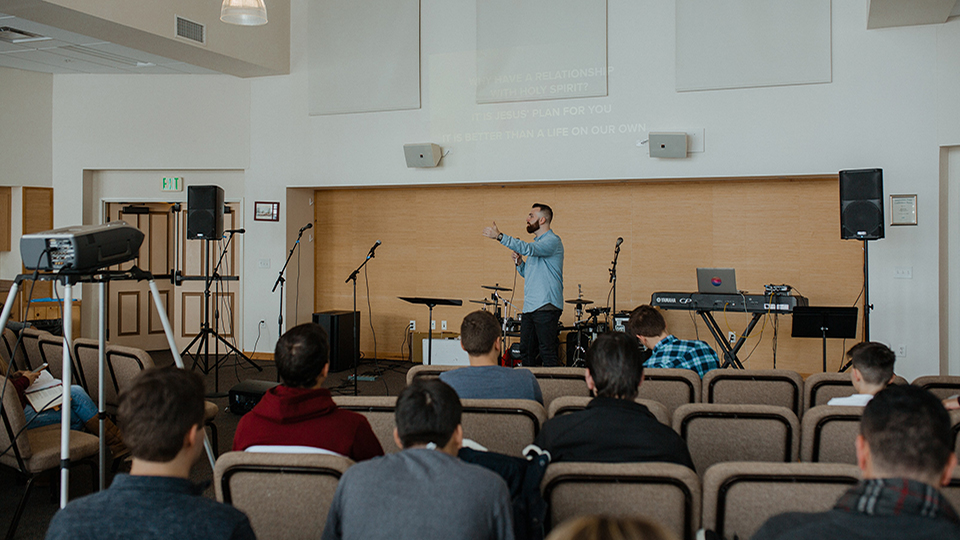
Numbers are a somewhat controversial topic when it comes to the local church. Some chase them, believing the size of the crowd will speak volumes about their own effectiveness. Others simply insist that Jesus wants to reach everyone, so everyone is the goal. Still others focus their energies on smaller gatherings, searching for an intimacy the crowd can seldom achieve. Church isn’t a numbers game, and yet it really is.
Okay, now that’s a confusing paragraph. But the life of the local church can’t be summed up in an attendance board or income statement. The so-called “nickels and noses” measures seem to be commonly used to evaluate churches, while we simultaneously insist there’s more to it than that. We want to insist that a healthy church is a growing church, and yet there are enough examples of unhealthy growth to give us caution. So how do you really measure effective local churches?
Like the annual trip to the doctor’s office for a physical, a real health evaluation is going to be comprised of multiple measures. You just can’t say you’re healthy if your weight is in line with your height. You don’t get a good health diagnosis for blood pressure either. There’s cholesterol to count and a heart rate to measure. And truth is, all these could be at perfect levels only to discover a cancerous tumor growing within. In truth, health measurement requires a number of inter-related measures.
Over the next few weeks, we’ll look at some of these. Taken together, they can provide a better picture of health than the simple chart of last week’s attendance.
The AC ratio.
The AC ratio actually takes that attendance number (annual weekly average) and sets it over the number of conversions occurring each year. So if your church averaged 100 in attendance last year, and you saw 10 people choose to follow Christ in that same year, the math is fairly simple–Avg. Attendance / Conversions or 100/10, which equals 10.
What the AC ratio means is that for every ten people attending your church, one person became a Christian. Another way to say it would be, “it takes ten of us to lead someone to Christ in a year.” Now, we understand that ten of us didn’t actually target the same person over a twelve-month period, but you get the idea.
In church health circles, we can call the AC Ratio a measure of missional effectiveness. Since the mission Jesus passed to us is to make disciples, this metric gives us some insight into how we’re doing with that. So…how are you doing with that?
In the Assemblies of God in 2014, the AC Ratio across the United States among all 12,849 churches was 4.2. So, across our Fellowship, it took four of us to lead someone to Jesus. Back in 1980, the national AC Ratio was 5.5, so you can see that we’ve been more effective with this first part of our Great Commission assignment in recent years. However, this ratio may show us something about church size too. In 2014, churches under 200 it takes about six of us to produce a convert each year, while the average for churches over 400 in attendance hovers around three of us.
Now there are a number of factors to consider if we’re going to determine a “healthy” rate, but given the increasing U.S. population and the likely number of unchurched folks in your community, surely an AC of at least 5.0 should be achievable in most places–if we’re really trying to reach people.
The CW Ratio
Our second metric for consideration is called the CW Ratio or the Assimilation metric. With the CW Ratio, we measure annual conversions against annual water baptisms. Here we’re asking, “how many of our converts did we keep long enough to get them baptized?”
This is a measure of assimilation because it shows, at least in part, that we are connecting those we are reaching to the ministries of the local church at least long enough to help them take this important discipleship step. So, maybe we had a large outreach last year and saw 15 people come to Christ. Over the next few weeks (sometimes months), we want to measure how many of those 15 were effectively connected to the church. Unless you baptize at the outreach event itself, this number can help us see if we’re assimilating these new believers into the life of the local church.
Now certainly there will be additional measures for assimilation, but the CW Ratio is a great way to see if our efforts are solely evangelistic, or if we’re achieving some real discipleship goals. Some churches report hundreds of conversions each year and yet their attendance only grows by a handful, if any. Why? Apparently we’re either over-reporting our conversions or we’re not doing a great job of connecting with folks after the “altar event.”
In 2014, U.S. Assemblies of God churches baptized one person for every 3.4 converts reported. That means we helped fewer than 1/3 of our converts take this essential step. Is that good enough? Probably not. For purposes of health, we have set a CW Ratio of 3.0 as a healthy target. That means we must see at least 1/3 of our converts baptized. Now some might think we should baptize 100% of our converts, and it’s hard to disagree with such thinking. But some of those converts may have been from other communities. Others may have attended an outreach, but haven’t made it to a worship service yet. So, 1 of 3 seems to be a minimum goal, but if you can achieve a CW Ratio of 1.0, we’ll rejoice with you!
Interestingly, smaller congregations report lower CW Ratios than larger churches. For example, in 2014, AG (US) churches under 200 in weekly attendance reported a CW Ratio of less than 2.5 while churches over 700 showed a CW Ratio of more than 5.0. Why the difference? Remember that larger churches report a much higher rate of conversions, and likely find it more difficult to maintain contact, even with these that have taken their first life-changing step. It’s a challenge, but one to which larger churches are giving increasingly more focus. Over the past decade, these largest of our churches are seeing their CW Ratio slowly decline (a good thing).
Want to do better with baptisms? Try offering more opportunities for baptisms. Also, look for ways to shorten the gap between the conversion moment and the chance to step into the water. You might also consider explaining this next step while you are in the altar with the new believer. In fact, that’s a good approach in all areas. With every step someone takes in their faith, help them understand the next step so they can chart a consistent course for their lives. As one pastor said, “Do all you can to ‘keep them moving forward’ so you can help people become more firmly planted in their faith.”
Want more ThoughtHub content?
Join the 3000+ people who receive our newsletter.
*ThoughtHub is provided by SAGU, a private Christian university offering more than 60 Christ-centered academic programs – associates, bachelor’s and master’s and doctorate degrees in liberal arts and bible and church ministries.



